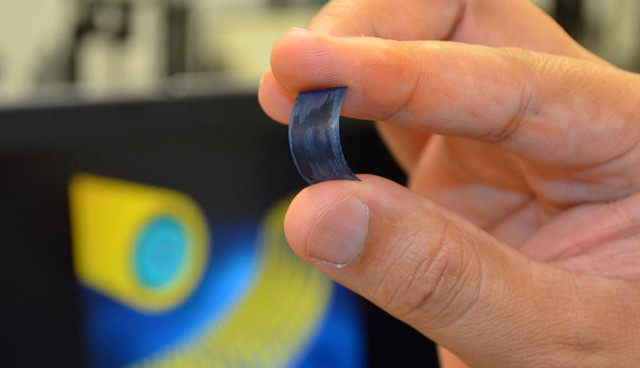New 2D supercap structure rivals Li-ion battery performance
December 03, 2016
on
on

Just about every mobile device these days relies on lithium rechargeable batteries. It doesn’t matter if it’s a smart phone or an all-electric eco vehicle; lithium cells currently offer good energy density. Research into supercaps however is indicating that they might one day replace batteries. They are certainly already better in terms of charging time and lifetime recharge cycles. Researchers at the University of Central Florida have used two-dimensional (2D) transition-metal dichalcogenides (TMDs) capacitive materials to build the new supercapacitor.
The new process could produce supercaps with energy densities within the range of modern lithium batteries. The classic supercap advantages such as fast charge rates and a high number of recharge cycles is not affected. Typical smartphone batteries often start to fade after 1.5 to 2 years. It’s not possible to exceed more than 1,500 charging cycles without a noticeable reduction in capacity. The maximum charge and discharge current must also be carefully controlled otherwise cell chemistry will be damaged. The new supercap prototypes however have already achieved 30,000 charge cycles without degradation, that’s 20 times the lifetime of a battery. As long as the charging station can supply the necessary energy, they can be charged in seconds.
The research team experimented with nanowires chemically coated with so-called 2D materials. The core of the fiber provides a good current conduction path and the plating, only a few atomic layers thick, forms an enormously large and robust surface area to give the structure high energy and power densities. Although the process is not yet ready for production, it is quite promising. The abridged research results were recently published in the NANO science journal.
The new process could produce supercaps with energy densities within the range of modern lithium batteries. The classic supercap advantages such as fast charge rates and a high number of recharge cycles is not affected. Typical smartphone batteries often start to fade after 1.5 to 2 years. It’s not possible to exceed more than 1,500 charging cycles without a noticeable reduction in capacity. The maximum charge and discharge current must also be carefully controlled otherwise cell chemistry will be damaged. The new supercap prototypes however have already achieved 30,000 charge cycles without degradation, that’s 20 times the lifetime of a battery. As long as the charging station can supply the necessary energy, they can be charged in seconds.
The research team experimented with nanowires chemically coated with so-called 2D materials. The core of the fiber provides a good current conduction path and the plating, only a few atomic layers thick, forms an enormously large and robust surface area to give the structure high energy and power densities. Although the process is not yet ready for production, it is quite promising. The abridged research results were recently published in the NANO science journal.
Read full article
Hide full article


Discussion (0 comments)